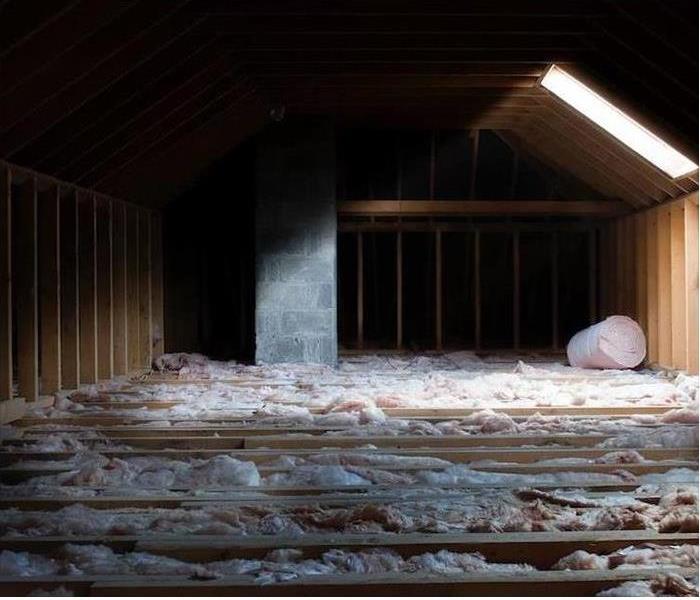Using Applied Structural Drying to Fix Storm Damage in Largo Attics
3/1/2022 (Permalink)
The Four Phases of Applied Structural Drying
Some of the most common forms of storm damage occur in and around the roof. Strong winds, torrential rain, and falling debris (from trees and other sources) are all significant risks, and they can knock tiles and slates clean off. When this happens, space opens up for water to enter the building and compromise roofing materials.
At SERVPRO, we handle this kind of storm damage in Largo homes all the time. It can be a little trickier to repair than water damage in other parts of the house, as most attics are awkward in shape. Some are difficult to move in and out of, with the only access point typically being a set of stair ladders.
Nevertheless, SERVPRO uses Applied Structural Drying to significant effect when remediating storm damaged attics.
Stage One: Evaporation by Airflow
Technically, the first stage of ASD is extraction, but it is unusual for enough water to accumulate in an attic to require motorized pumping. Typically, the SERVPRO technicians move straight in with air movers and ventilation box fans. They are placed around the space and direct clean, dry air into the attic.
Stage Two: Removing Wet Materials
If substantial amounts of water have entered the attic through a hole in the roof, there is a possibility that the insulation is wet. Our technicians remove affected sections and decide whether to dry or replace them. Fiberglass insulation responds well to drying. Typically, it is suitable for removal and treatment in a humidity-controlled room.
Stage Three: Evaporation by Dehumidification
The next stage of ASD is dehumidification. Even small attics can be dried out in this way because we have access to all kinds of different drying tools. A more significant number of compact dehumidifiers in tight spaces are the best option. They pull in moisture-heavy air and direct it over special chemicals. They capture the water and send the air back out clean and dry.
Stage Four: Temperature Control
The Applied Structural Drying stage is a consistent process throughout. The remediation team has to maintain optimal conditions to ensure the success of the drying process. Dry the area too fast, and there’s a risk of secondary water damage, so we control dehumidification by manipulating relative humidity.
At SERVPRO of Largo, we help homeowners in the local area carry out fast, effective storm repairs. If heavy wind or rain has damaged your roof, get in touch with the team and arrange a consultation. Call us 24/7 at (727) 586-0060.






 24/7 Emergency Service
24/7 Emergency Service